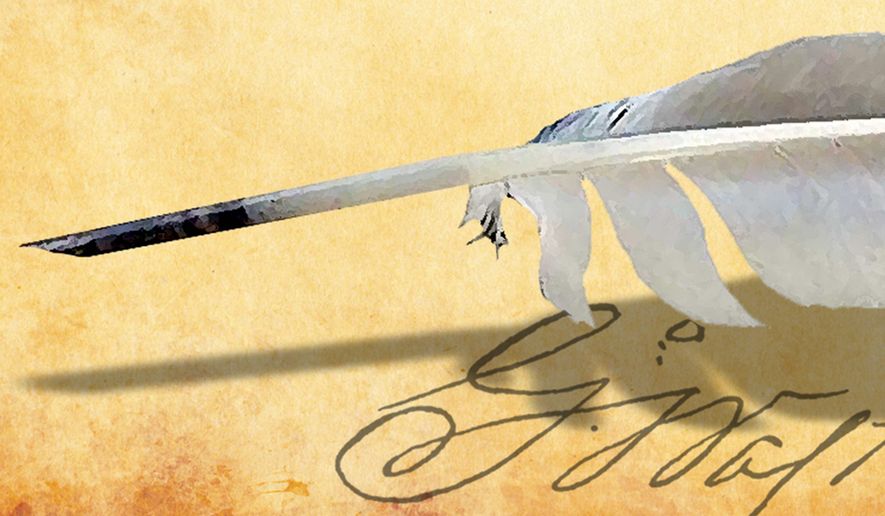OPINION:
Unlike President Obama, who uses executive orders mostly to effect what Congress won’t legislate, George Washington used them to clarify issues with which few in Congress could disagree. Also, unlike Mr. Obama, whose number of executive orders is approaching 200, Washington used the procedure sparingly during his two terms in office from 1789 to 1797. Only eight were issued. Of course, nobody knew the proceedings and final document of the Constitutional Convention better than Washington, for he was unanimously elected and served as its presiding officer. Once elected president, he recognized that prudence would be his guidepost, because anything he did could, in his words, “be drawn into precedent.”
When it came to facilitating matters that clearly did not require Congress, the sessions for which were often short, Washington acted. For example, he issued on Oct. 3, 1789, an executive order recognizing a day of Thanksgiving for Thursday, Nov. 26. Another, on Aug. 26, 1790, dealt with the necessity for Americans to abide by treaties that had been made with several Indian tribes, and two clarified the boundaries of the District of Columbia that, beginning in 1800, would serve as the nation’s permanent capital.
Two more, on July 15, 1792, and Aug. 7, 1794, urged rebellious citizens to recognize and pay the tax on liquor that had become law. And because a so-called Whiskey Rebellion broke out in Pennsylvania, Washington actually led a military contingent there to end the violence. Later, in 1795, he pardoned guilty participants.
The most controversial of Washington’s executive orders came on April 22, 1793, when, with Congress out of session, the president warned citizens not to interfere in the war between Britain and France and other participating powers, delineating an expectation of “friendly and impartial” relations from Americans. This “neutrality” order raised the eyebrows of Secretary of State Thomas Jefferson and some congressmen, but did not lead to any constitutional challenge.
However, of all Washington’s executive orders, his very first, on June 8, 1789, three months after taking office, has the most relevance today. Recall that in this era the president had few people to help in running affairs of state. To be sure, Washington would devise a Cabinet, but most of his day-to-day work — reading reports, meeting officials, responding to queries or even penning letters — was done by him. There was no chief of staff. There was no staff, period.
Washington’s first executive order was to the heads of departments “to impress me with a full, precise, and distinct general idea of the affairs of the United States” they oversaw. As he noted to his vice president, John Adams, a month earlier: “It will be much easier to commence the administration, upon a well-adjusted system, built on tenable grounds, than to correct errors or alter inconveniences after they shall have been confirmed by habit.”
Consequently, not only were there no administrative scandals during Washington’s two terms, but his Farewell Address of Sept. 19, 1796, noted the critical importance of power being restrained by constitutional provisions. “If in the opinion of the people the distribution or modification of the constitutional powers be in any particular wrong, let it be corrected by an amendment in the way in which the Constitution designates. But let there be no change by usurpation; for though this in one instance may be the instrument of good, it is the customary weapon by which free governments are destroyed.”
Well-read, Washington may also have been influenced on this subject of political power by the highly influential French judge, Charles de Secondat, Baron de Montesquieu, whose “The Spirit of the Laws” (1748) was widely translated and distributed. “There can be no liberty,” wrote Montesquieu, “where the legislative and executive powers are united in the same person … .”
Thomas V. DiBacco is professor emeritus at American University.




Please read our comment policy before commenting.